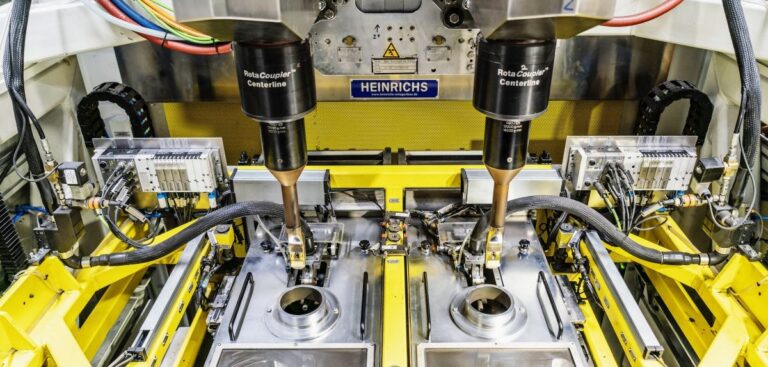Skoda has announced the installation of a new processing line for plasma coating of cylinder liners at its Mladá Boleslav plant in the Czech Republic. The coating technology will initially be used on its latest Evo I3 engine, from the EA211 series, with a primary goal of friction reduction.
Christian Bleiel, head of component production at Skoda, noted, “The technically highly innovative plasma coating makes our EA211 TSI Evo engines even more efficient. It reduces friction losses and thus also fuel consumption. What’s more, this type of coating also allows heat to be more evenly distributed within the cylinders and helps it to dissipate more efficiently, thus optimizing the thermal load. We produce the plasma-coated engines at Mladá Boleslav in three shifts and are installing them in the Fabia, Scala, Octavia, Kamiq and Karoq.”
During the production process, the cylinders are first bored on the machining line. A 1,500W laser then abrades the cylinder bores to ensure that the plasma layer will optimally adhere to the surface. This involves the laser beam creating 10 grooves per millimeter, each measuring an average depth of 40μm. This production step takes place in a controlled atmosphere filled with nitrogen to keep the laser’s optics free from contamination and to ensure the necessary level of accuracy.
A mixture of hydrogen and argon is used to create plasma gas, requiring 4.5 liters of hydrogen per minute during the process. The plasma reaches a temperature of 15,000°C, and is then mixed with various types of fine steel powder. This powder is made up of iron, carbon, silicon and manganese as well as other necessary elements. The individual powder grains measure no more than 50μm. When sprayed onto the cylinder walls, the molten powder forms a layer measuring approximately 250μm. During final processing, this layer is honed out, so that it measures just 150μm. To put all of this in perspective: the wall of a conventional cylinder liner is 4mm thick.
Each cylinder is automatically measured at several stages throughout the process to assess its quality. Optical measuring instruments first record the surface abraded by the laser, before a second measurement is taken once the plasma has been applied. Finally, the structure of the plasma layer is tested using turbulent flow.


